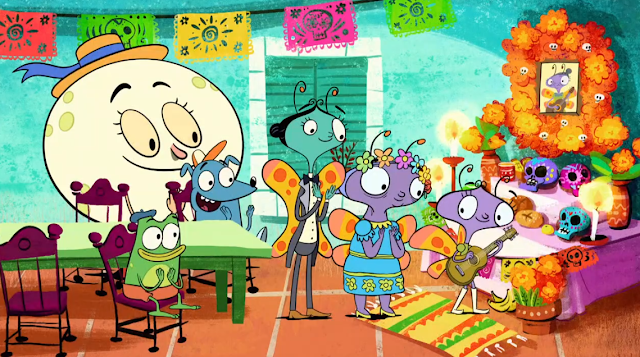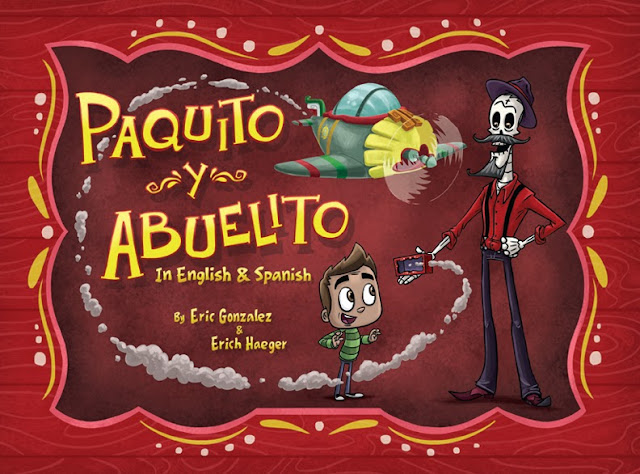Do you teach your students or children about cumulative tales? If not, these entertaining stories are a fantastic way to engage young learners. Cumulative tales follow a pattern that builds step-by-step, making them ideal for improving speech, language development, and literacy fluency. They’re particularly helpful in classrooms, homeschools, and speech therapy settings because the repetitive elements reinforce memory and learning.
Whether you’re exploring folklore or looking for engaging activities to boost reading and comprehension, cumulative tales are a must-try. In this post, we’ll dive into what makes cumulative tales so powerful and share tips for teaching them effectively. Plus, I'll introduce a Halloween-themed cumulative tale lesson that your students will love!
What Is a Cumulative Tale?
A cumulative tale is a type of story that builds by adding elements in each step, with every new addition followed by a repetition of the previous parts. These stories rely heavily on rhythmic patterns and repeated phrases, which make them easy for children to follow and participate in.
The magic of cumulative tales lies in their predictability and playful structure. Each time a new character, object, or event is introduced, the story circles back to recount the earlier parts. This makes them ideal for developing vocabulary, sentence structure, and comprehension skills in young learners.
Examples of Classic Cumulative Tales
1. The House That Jack Built
Perhaps the most famous example would be The House that Jack Built. The illustration above was published in 1877 by Randolph Caldecott. But the tale itself is much older than that. It was passed on by word of mouth for years (possibly even a century or more!) before it was first published in 1755. Dare I say that the structure and story is as popular today as it was then? I don't know, but I can state in all honesty that this was one of the stories I was told as a child, and one that I've read to my own children. Its charm lies in the way each element connects back to the house, creating a chain of amusing characters and situations.
The House That Jack Built shows how cumulative tales are effective at holding a child’s attention because the story grows incrementally, with every repetition deepening engagement.
2. There Was an Old Lady Who Swallowed a Fly
Another recognizable example would be the children's rhyme and nonsense song, There Was an Old Lady Who Swallowed a Fly. This one, though, was written a looooong time later - the 1940s, actually. But it is still beloved by children and families today for its sheer absurdity.
The story also demonstrates how cumulative tales can be used to introduce sequencing skills and cause-and-effect relationships in a fun way.
Why Use Cumulative Tales for Teaching?
Cumulative tales may or may not rhyme. Some involve tongue twisters. They are frequently humorous. Oftentimes, the story has a surprise ending. Or it may start with a problem which each repetition attempts to solve. Most of the time, the new story elements are kept relatively short and simple. The tales involve strong imagery, so the focus tends to be on nouns and adjectives. But always, they repeat the part of the story already told.
Cumulative tales offer more than just entertainment. Here are a few key educational benefits of using these stories with children:
1. Language Development and Vocabulary Building
Since cumulative tales rely on repetition, children encounter the same vocabulary multiple times, reinforcing word meanings. The repetition also provides natural opportunities for students to practice pronunciation, and sentence construction.
2. Memory and Comprehension Skills
The structured pattern of cumulative tales helps children predict what comes next, strengthening both memory recall and comprehension. The simple, repetitive structure makes them excellent for younger learners and English language learners (ELLs).
3. Speech Therapy Applications
Cumulative tales can also serve as tools in speech therapy, helping children with speech delays practice words and phrases through repetition. The predictable language patterns build fluency and confidence in speaking.
4. Encouraging Creativity
Many cumulative tales invite participation. Children can create their own cumulative stories by following the pattern, which encourages creative thinking and storytelling skills.
A Fun Way to Teach Cumulative Tales: My Halloween Storybook & Lesson Plan
I was thinking about this the other day and wondering how I could teach this to my children. So, I created a Halloween-themed printable that would do just that.
I wanted to introduce cumulative tales to my children in a hands-on way, so I created a Halloween-themed printable storybook. This activity is designed to teach young learners how cumulative stories work while sparking their creativity.
What’s Included in the Halloween Cumulative Tale Lesson?
Printable Storybook:
- The story follows a little witch’s house and builds on relationships between characters using nouns and adjectives.
- Children can color in the illustrations, making it a fun and engaging project for younger learners.
Introduction to Cumulative Tales:
- A child-friendly explanation of how cumulative tales work, with examples for easy understanding.
Graphic Organizers for Creating Their Own Tales:
- These worksheets guide students through the process of writing their own cumulative stories step-by-step.
Bilingual Content in English and Spanish:
- The story and activities are available in both English and Spanish, though the Spanish version is adapted for natural flow rather than being a direct translation.
How to Use the Halloween Storybook & Lesson Plan in Your Classroom or Homeschool
Here are a few ideas for incorporating this Halloween-themed lesson into your teaching:
- Storytime Activity: Read the story aloud, pausing to let children repeat the previous parts. This reinforces memory and builds excitement as the story grows.
- Creative Writing Exercise: After reading, encourage children to use the graphic organizers to create their own cumulative tales.
- Language Practice for ELLs: Use the bilingual version to help English language learners build vocabulary in both languages.
- Art and Literacy Integration: Let children color their storybooks while listening to the tale. This blends art with literacy, making the activity even more engaging.
Where to Get the Halloween Cumulative Tale Printable
You can find my
Halloween Storybook & Cumulative Tale Lesson in my TpT store. It’s an easy-to-use resource that brings cumulative storytelling to life while teaching essential language and literacy skills. Perfect for classrooms, homeschools, or even as a fun Halloween activity!
Final Thoughts on Teaching with Cumulative Tales
Cumulative tales offer a unique way to build language skills while keeping children engaged with their repetitive, rhythmic structure. Whether you’re working on speech therapy, bilingual education, or just looking for a fun, creative activity, these stories are a powerful teaching tool.
Don’t forget to check out the Halloween-themed lesson to give your students a hands-on experience with cumulative tales. It’s a playful way to celebrate Halloween while reinforcing key language concepts!
Other Halloween-Themed Posts You May Enjoy:
























































